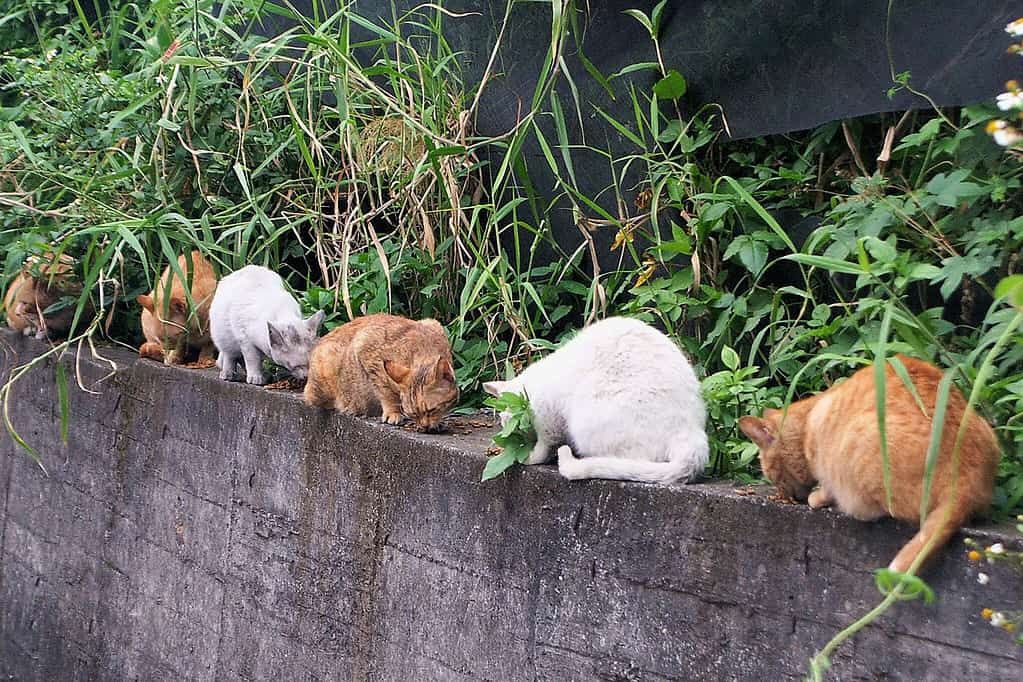In 1963, the French space program sent a cat into space to test how its brain would react. While she is less known than the first animal in space — a dog named Laika — she was just as special. Her name was Félicette, and she was the first and only cat to ever visit outer space. Unfortunately, her journey ended short and for no good reason.
Keep reading to discover more about the legendary cat who sailed the stars, and her journey that should have been longer.
A Cat in Outer Space?
At the time, many countries were experimenting with animals and space travel. France had already experimented with sending rats to space. Most other places were using dogs and monkeys, but the French had an excess amount of stray cats. A total of 14 of the strays were gathered up by members of the French CERMA organization.
Once the scientists brought the strays back to the center, they gave them numbers. This was to prevent the scientists from becoming too attached to the cats. They also planted electrodes in their brains and throughout their bodies, which could monitor their vital signs.
The cats went through significant training missions, from being confined in small containers to spinning around to simulate the g-forces that affect flying. The cats were also subjected to extremely loud engine sounds. The training lasted around two months, and it was intense.

French scientists gathered stray cats to participate in the experiment.
©lienyuan lee / CC BY 3.0 – License
Choosing the Astronaut
After the training and experiments were conducted, scientists picked six cats to go on to the next stage of testing. Out of those six, one cat was chosen to go to outer space: a black-and-white tuxedo cat called C341.
C341 blasted off into space on October 18, 1963. While she launched, C341 was distressed, her heart racing and her breathing very rapid. Inside her small capsule, she faced some very intense g-forces — nearly double that which the Apollo astronauts faced. Once C341 achieved weightlessness, scientists noted that she was much more at ease. Her breathing slowed and the scientists didn’t record any meowing, which meant she was likely content.
Unlike many other animals who were sent into space, C341 made it through the launch and survived her journey to outer space. She orbited the Earth for about five minutes but had no views of the planet or anything around her.

Though she was outside the Earth’s atmosphere, C341 missed the gorgeous views of the planet and moon.
©Jitendra Jadhav/iStock via Getty Images
Landing C341
C341 began the landing journey, experiencing 7g as her capsule fell. It was the part of the journey that was least enjoyable for her, as scientists noted by C341’s thumping heartbeat.
Then, the parachute opened, and C341 floated back to Earth, landing just 13 minutes after her launch. While she landed rather uncomfortably (with her bottom up in the air, and upside down), she was otherwise unscathed.
C341 had just become the first and only cat to ever visit outer space and live. Because she was to become so famous for her space travel, the scientists chose to give her a name. At first, the media and fans nicknamed the cat ‘Felix’, after the similarly-colored cartoon cat. However, CERMA changed her name to Félicette, the feminine version of Felix.
Unfortunately, Félicette’s journey didn’t end there.

Félicette was a black and white cat who visited space.
©Ron Frazier / CC BY 2.0 – License
Honoring Félicette
Around two months after she landed, French scientists euthanized Félicette to study her brain and body. Later, they admitted that the postmortem had shown nothing useful and that it was pointless.
Because France had no real stake in the space race, Félicette didn’t receive the recognition she deserved for a long time. But finally, in 2019, she was honored by a memorial statue that was erected in the International Space University’s Pioneers Hall. It was the 60th anniversary of her trip to space and at the time, her life and untimely death had gathered some internet fame.
After Félicette, France kind of pulled out of the space race. They made a few more attempts, one with a different cat that ended unsuccessfully six days after Félicette’s journey. Then, in 1967 they sent two monkeys, which were the last animals that France has sent into space to this day. Interestingly enough, France never sent any humans to space. Perhaps after their missions with rats, cats, and monkeys, scientists had found the information they were looking for. Or maybe the United States’ and Russia’s successes during the space race had pushed out the opportunity for France to make a name as well.
The photo featured at the top of this post is © Sonsedska/iStock via Getty Images
Thank you for reading! Have some feedback for us? Contact the AZ Animals editorial team.






